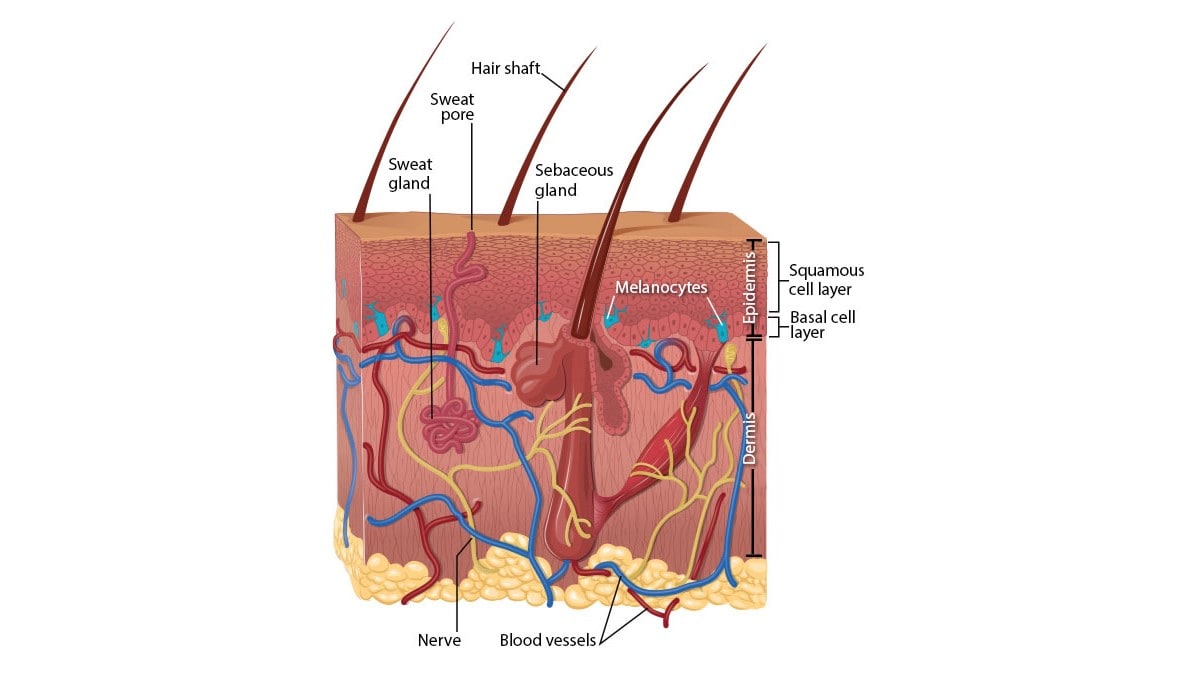Key points
- Skin cancer is a disease in which cells in the skin grow out of control.
- Most cases of skin cancer are caused by overexposure to ultraviolet (UV) rays from the sun, tanning beds, or sunlamps.
More Information

What it is
Skin cancer is the most common cancer in the United States. Some people are at higher risk of skin cancer than others, but anyone can get it. The most preventable cause of skin cancer is overexposure to ultraviolet (UV) light, either from the sun or from artificial sources like tanning beds.

The skin is the body's largest organ. Skin has several layers, but the two main layers are the epidermis (upper or outer layer) and the dermis (lower or inner layer). Skin cancer begins in the epidermis, which is made up of three kinds of cells:
- Squamous cells: Thin, flat cells that form the top layer of the epidermis.
- Basal cells: Round cells under the squamous cells.
- Melanocytes: Cells that make melanin and are found in the lower part of the epidermis. Melanin is the pigment that gives skin its color. When skin is exposed to the sun, melanocytes make more pigment and cause the skin to darken.
Types
Basal and squamous cell carcinomas are the two most common types of skin cancer. They begin in the basal and squamous layers of the skin, respectively. Both can usually be cured, but treatment is expensive and can leave scars.
Melanoma, the third most common type of skin cancer, begins in the melanocytes. Of all types of skin cancer, melanoma causes the most deaths because of its tendency to spread to other parts of the body, including vital organs like the brain and liver.
Causes
Most cases of skin cancer are caused by overexposure to UV rays from the sun, tanning beds, or sunlamps. UV rays can damage skin cells. In the short term, this damage can cause a sunburn. Over time, UV damage adds up, leading to changes in skin texture, premature skin aging, and sometimes skin cancer. UV rays also have been linked to eye conditions such as cataracts.
